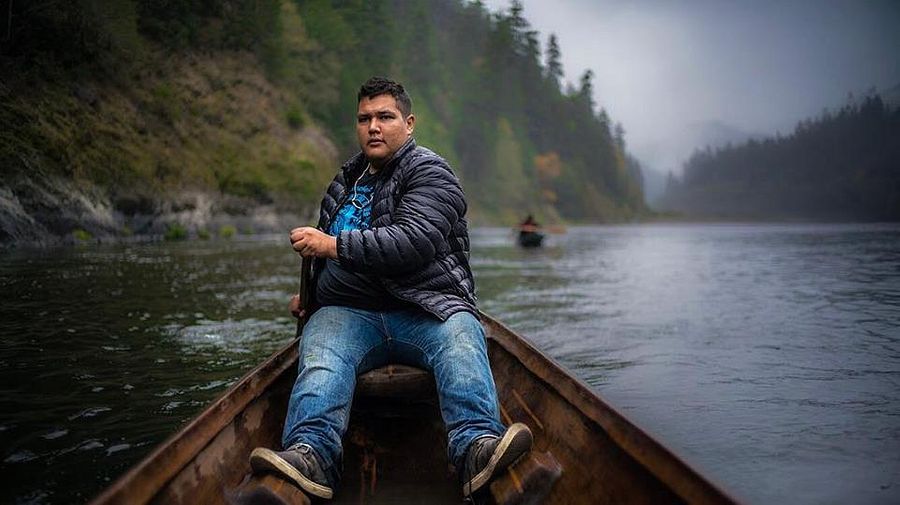Gather on Netflix | Yurok News
FIVE 💓💓💓💓💓The northern California Yurok tribe was featured in this wonderful documentary GATHER! Please watch if you can on Netflix. It is truly wonderful to see the success toward Native Foods Sovereignty.
There is also good news about the YUROK!
 The Yurok Tribe celebrated the grand opening of the first tribally operated visitor center within California’s state park system Thursday. The Chah-pekw O’Ket-toh Stone Lagoon Visitor Center,
located in Humboldt County, is now operated by the tribe in a
partnership with California State Parks. Recently renovated and renamed,
the center contains displays that reflect the tribe’s longstanding
cultural connection to the lagoon. Yurok interpreters will share the
tribe’s history from pre-contact to contemporary times with visitors.
The Yurok Tribe celebrated the grand opening of the first tribally operated visitor center within California’s state park system Thursday. The Chah-pekw O’Ket-toh Stone Lagoon Visitor Center,
located in Humboldt County, is now operated by the tribe in a
partnership with California State Parks. Recently renovated and renamed,
the center contains displays that reflect the tribe’s longstanding
cultural connection to the lagoon. Yurok interpreters will share the
tribe’s history from pre-contact to contemporary times with visitors.
During a virtual celebration Thursday, the center’s manager Rosie Clayburn, Yurok Cultural Resources Department Director and Tribal Heritage Preservation Officer, talked about how the public will be able to learn about tribal history, culture and little-known facts about the park.
“We have so many exhibits. We have so many stories to tell here. This place is so deep in history and there’s such a significance here…bringing back the Jump Dance in 2012 that hadn’t been danced in over 100 years, telling the story of how this land came to be state parks. And then, telling the story how this has always been Native land that Yurok people have always had a connection to this place and it’s never gone away, it’s just a continuation through time.”
The tribe also celebrated work to reintroduce the California condor. Later this month, the tribe and Redwood National Park plan to release four condors. They’ll be the first to take flight in the region since the late 1800s. That effort has been underway by the tribe since 2008.
 |
| Yurok tribal fisherman Sammy Gensaw |
More about GATHER:
In traditional times, food in Indigenous North American communities was only as far away as the forest, plains, desert, sea or garden in the village. Modern ways of life and challenges have taken us away or — in some cases — barred us from our food sources. But we, as Indigenous people, continue to return to our places of origin, including our food.
GATHER is that path, the story of the rebuilding of those food systems. GATHER is an intimate portrait tracing the intentional destruction of Native American foodways and our renaissance and resilience, our inherit right, to reclaim it.
Through GATHER, film partner and co-producer First Nations Development Institute aims to further build international awareness, understanding, and appreciation of the Native American food movement, which will ultimately bolster the support in improving policy and the regulatory environment for long-term sustainability.
Featuring the work of First Nation’s Nourishing Native Foods & Health program and First Nations’ grantees and partners, GATHER is a way of supporting tribes and Native communities as they build sustainable foodways that improve health, strengthen food security and increase control over Native agriculture and food systems.
GATHER follows
- Chef Nephi Craig, a citizen of the White Mountain Apache and Navajo Nations who opens an Indigenous foods café on the White Mountain Reservation.
- Sammy Gensaw, a Yurok youth leader of the Ancestral Guard nonprofit who grew up on the Klamath River as its salmon were fished to near extinction.
- Twila Cassadore, a San Carlos Apache woman who helps those return to the diets of Apaches before people were moved onto reservations and became reliant on government rations, such as commodities.
- Elsie DuBray, a young Lakota woman of the Cheyenne River Sioux Tribe whose father Fred started the Intertribal Buffalo Coalition with the aim of revitalizing buffalo as a source of spiritual and physical nourishment.
- THEIR WEBSITE



Comments